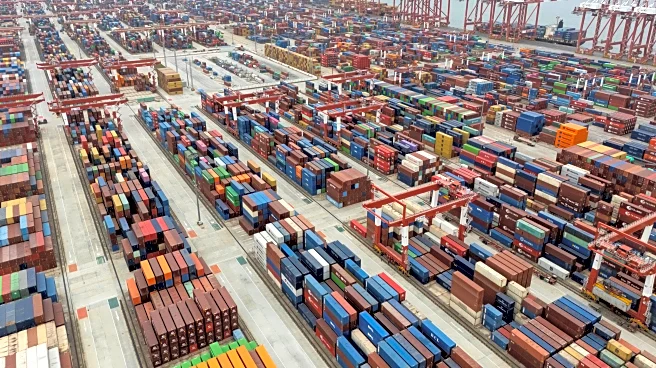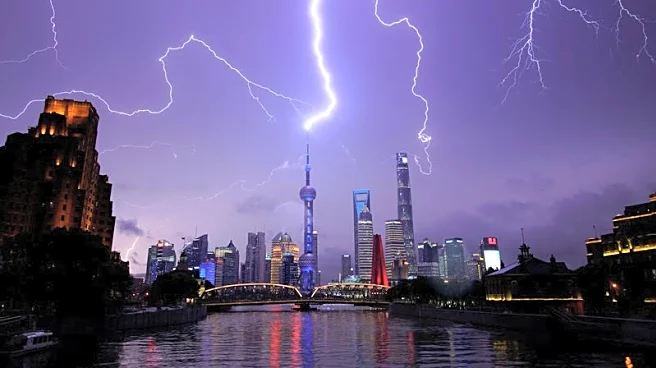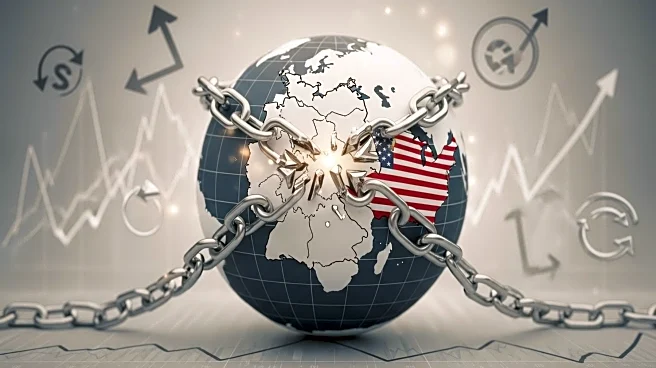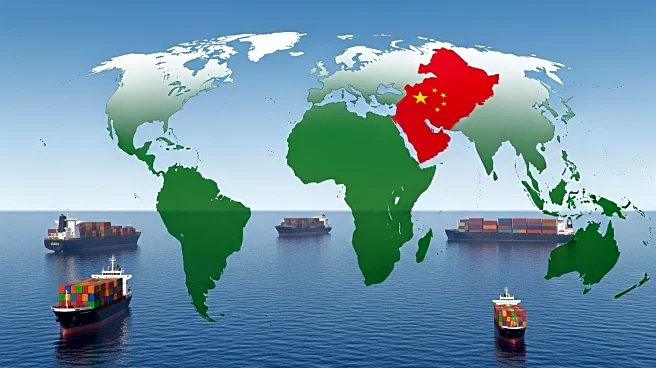What's Happening?
Chinese garment manufacturers are facing increased pressure due to ongoing trade conflicts with the United States and rising production costs. At the China International Fashion Fair (CHIC) in Shanghai, industry leaders discussed strategies to navigate these challenges. The trade dispute has led to high import duties, affecting the cost of Chinese goods in the US market. Despite these hurdles, exports to the US have only slightly declined, while exports to Europe have increased. Manufacturers are responding by diversifying their markets, focusing on long-term partnerships, and exploring new opportunities in South America, the Middle East, and Africa. Additionally, some companies are investing in production facilities in countries like Ghana to reduce costs and maintain competitiveness.
Why It's Important?
The trade conflict between China and the US has significant implications for the global textile industry, particularly for US businesses relying on Chinese imports. The increased tariffs could lead to higher prices for consumers and impact the profitability of US companies sourcing from China. Conversely, Chinese manufacturers are seeking to mitigate these effects by expanding their market reach and investing in cost-saving measures. This shift may alter trade dynamics, with potential benefits for regions like Europe and Africa as Chinese companies seek new partnerships. The situation underscores the interconnectedness of global trade and the need for strategic adaptation in response to geopolitical tensions.
What's Next?
As the trade dispute remains unresolved, Chinese manufacturers are likely to continue exploring alternative markets and production strategies. The focus on long-term partnerships and cost reduction measures will be crucial in maintaining competitiveness. The industry may also see increased investment in digital solutions and artificial intelligence to enhance production efficiency. Stakeholders, including US businesses and policymakers, will need to monitor these developments closely, as they could influence future trade negotiations and economic policies.
Beyond the Headlines
The ongoing trade conflict highlights broader issues of economic nationalism and the challenges of globalization. As countries reassess their trade relationships, manufacturers must navigate complex regulatory environments and shifting consumer preferences. The emphasis on digital solutions and outsourcing reflects a broader trend towards technological innovation and global supply chain diversification. These changes may have long-term implications for labor markets and economic development in both China and its partner countries.













